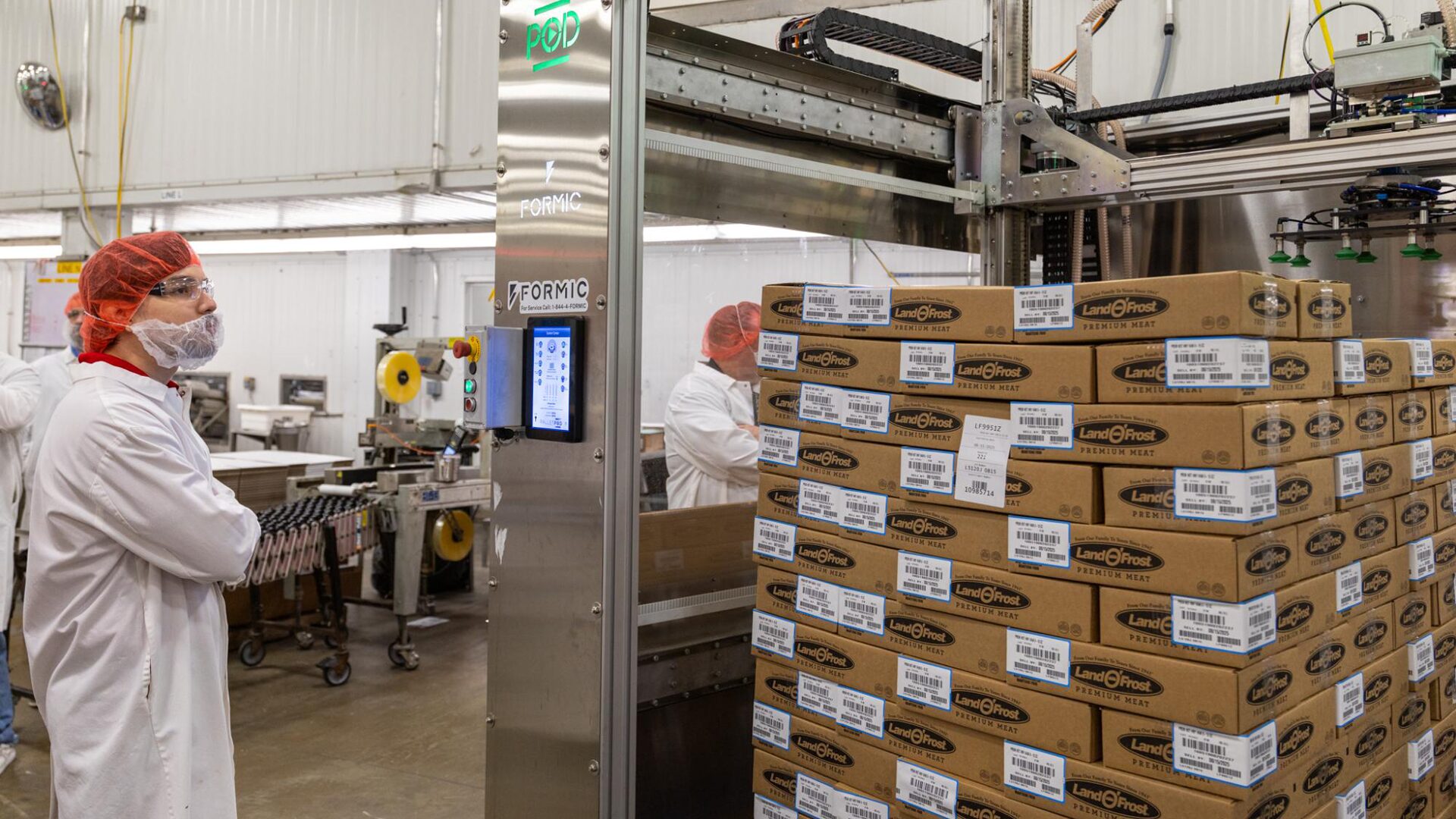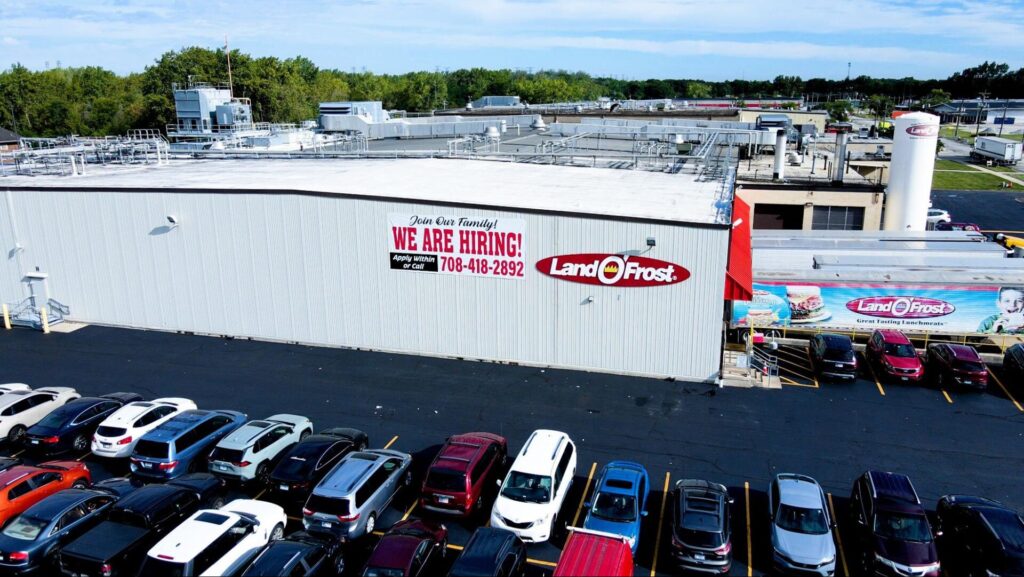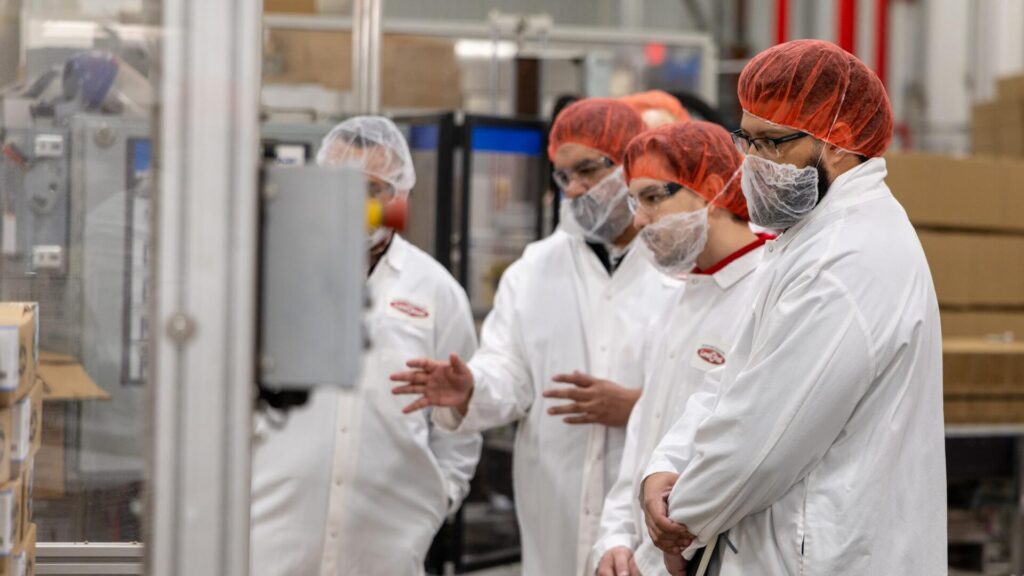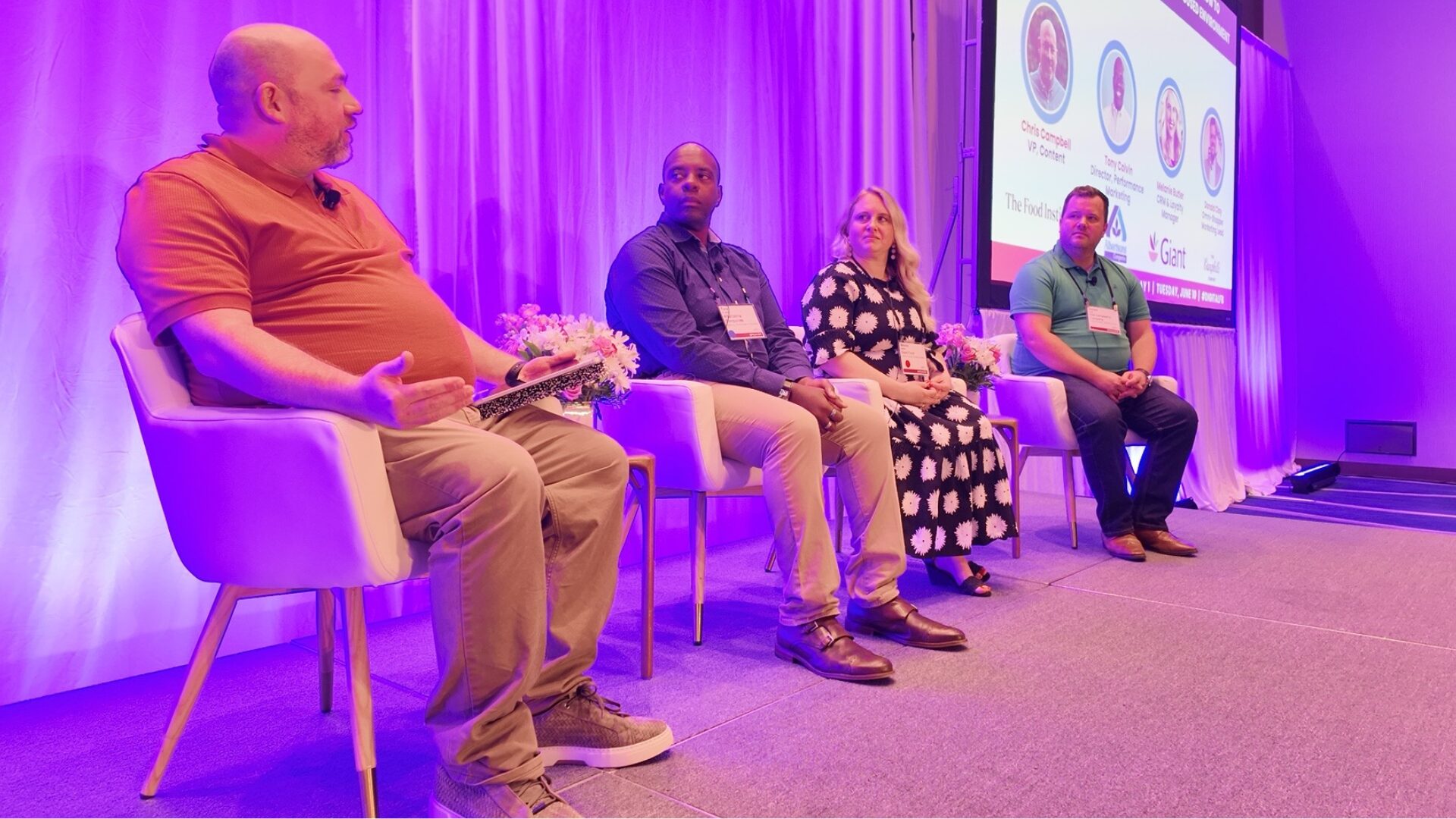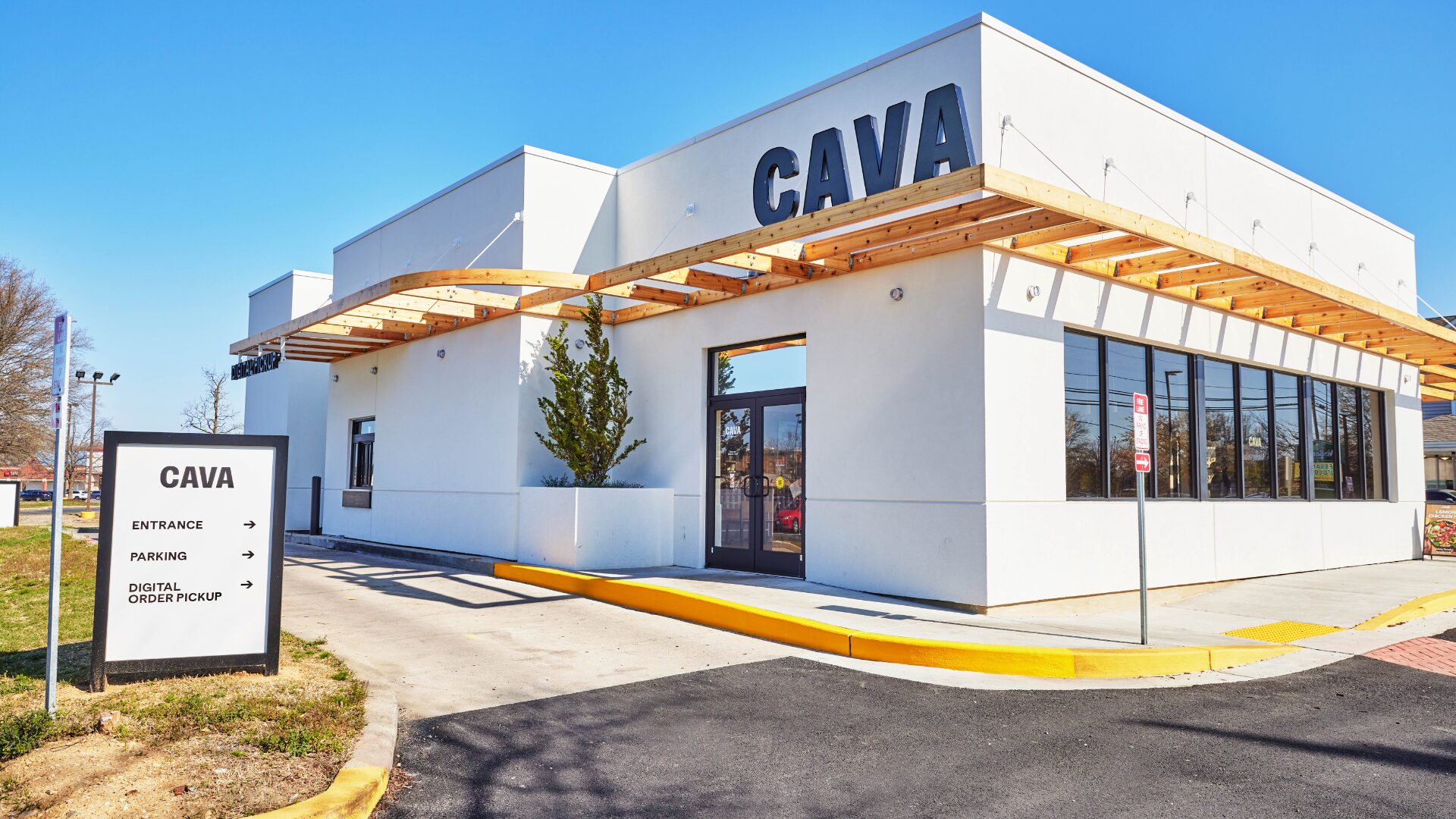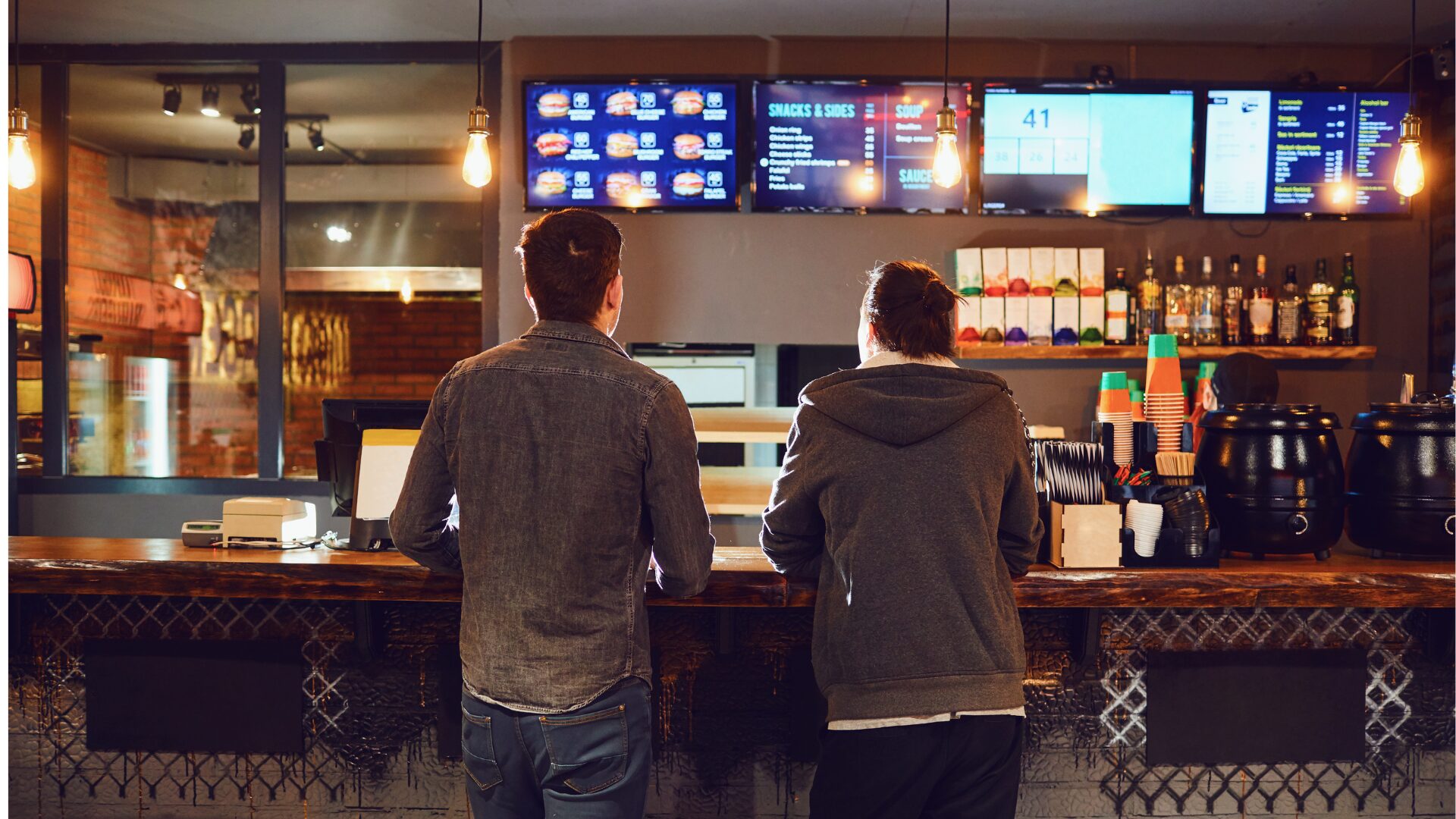When you’re shipping more than 128,000 pounds of meat daily, inefficiency isn’t an option. At Land O’Frost’s bustling Lansing, IL, facility, the pace is relentless, and automation is now central to keeping it all moving.
Land O’Frost, an 84-year-old manufacturer of deli meat and sausage, has long been a staple in the food industry. Across the sector, labor shortages and demand volatility are creating pressure to do more with less. For Land O’Frost, this wasn’t a disruption, it was an invitation to evolve to keep up with the pace of modern manufacturing while maintaining high standards of efficiency.
With limited labor availability and a pressing need to allocate capital to drive revenue growth, they sought an answer that allowed them to solve for both. The solution became obvious: Full Service Automation.
Traditional automation solutions usually take months to fully implement, whereas Land O’Frost was able to achieve this in a matter of a few deployment days. Over the course of two weekends, with no production downtime, Formic deployed all five gantry-style palletizing systems, programmed relevant SKUs and pallet patterns, and trained floor operators to use the machines at Land O’Frost.
By embracing a fully supported automation model requiring no capital purchase, Land O’Frost not only optimized packing operations but also improved facility ergonomics and achieved OpEx savings while leaving their capital budget free for revenue-generating projects.
Why Land O’Frost Chose to Automate
While Land O’Frost’s history has been marked by a commitment to quality, efficiency, and company culture, the company recognized that the pace of technological advancements meant it had to continually reassess operations for continuous improvement.
That’s why Land O’Frost added five automated palletizers to the end of its line to pack and stack all of those cases daily, freeing up valuable employees to handle more impactful jobs on the line. Land O’Frost deployed Formic’s Full Service Automation to overcome three major production line challenges:
1. CapEx Allocation
Like many successful, growing businesses, Land O’Frost faced the challenge of stretching capital across a long list of priorities, most of which are directly tied to revenue growth. As Bobby Hooper, LOF’s Director of Continuous Improvement, explains: “As a capital improvement guy, I have a bigger list of wants than the money that’s available on a year-to-year basis.”
The traditional automation model, which requires large upfront investments, didn’t fit the company’s budgeting reality.
2. Constant Product Changeovers
Another area for improvement in Land O’Frost’s manual palletizing process was the difficulty of product changeovers. The company runs multiple SKUs, which means that every time there is a product changeover, there’s also a new pallet pattern.
When Land O’Frost had a SKU change on the production line, the company needed to gather employees for scrum meetings to ensure the work would be done correctly. This happened frequently throughout the day, creating unnecessary delays and impacting throughput on the line.
3. Labor Shortages and Safety
Land O’Frost, like many manufacturers, faced growing pressure from labor shortages. This challenge was compounded by the physical demands of manual palletizing. The repetitive nature of this physically demanding task made it difficult to retain workers on the line.
“Over time, the physical demands became more apparent: constant reaching, stretching, bending — all of which led to strains and safety incidents,” Hooper said. “That’s why this automation opportunity felt like a no-brainer.”
Land O’Frost’s Productivity Solution: Full Service Automation
To avoid the need for capital spend, eliminate time-consuming changeovers, and improve ergonomics and employee safety, Land O’Frost sought an all-encompassing solution to automate the manual tasks at the end of the company’s line.
One year after deploying five automated palletizers at the end of Land O’Frost’s line, production efficiency has gone beyond what was initially envisioned. In fact, in one year, Frank Mejia, Land O’Frost’s Industrial Engineer, said it has “proven its worth ten times over.” Here’s how:
1. Efficiency Gains Without the Capital & OpEx Savings
While the traditional automation model — an expensive equipment purchase that the company had to fully maintain — didn’t fit Land O’Frost’s capital spending plans, Full Service Automation did. Land O’Frost was able to shift costs to its OpEx budget, avoiding capital expenditure entirely. That flexibility helped the company invest in automation without compromising other critical growth initiatives.
This allowed Land O’Frost to realize efficiency gains without the usual capital spend: “This is one of those positions where we were hand palletizing every case, and there’s no value to that,” Mejia said. “It’s a low-hanging fruit that we can address with no capital. It’s almost a no-brainer. You add to that the labor savings we get, and that’s basically the cherry on top.” After implementing the Full Service approach, Land O’Frost achieved 20% savings on labor-related OpEx, creating long-term financial benefits.
2. Simplifying Changeovers
Instead of continually retraining new employees or temp labor on unique pallet patterns, automation reduced the time and complexity of product changeovers. This has led to faster production cycles and more agile operations.
3. No More Labor Gaps & Increased Employee Satisfaction
As Mejia puts it: “Automation means helping our employees have a better work life.” Employee well-being was a key driver in Land O’Frost’s decision to automate, because retaining valuable employees will help avoid labor gaps impacting the entire U.S. manufacturing industry.
“You don’t automate to eliminate jobs. We don’t do that. We take our folks and repurpose them into more critical jobs,” said Alfred Williams, VP of Manufacturing at LOF.
The team members previously stacking products into the wide array of pallet patterns required by Land O’Frost’s customers across the country were trained as robot operators, adding to their skill sets and leveling up the team as the business moves into the future, leading to greater retention and employee satisfaction.
Formic’s automation model enables Land O’Frost to swap equipment as business needs change. This is invaluable to the Land O’Frost team: “The ability to be able to change down the road is vital to us, and being ahead of that curve is key,” Hooper said. “We’ve found ourselves so many times over the years in situations where, by the time you realize you want or need something, you want it now, but the lead time is 26 to 52 weeks. Staying ahead of that curve has really become part of our game plan.”
What Land O’Frost Gained with Full Service Automation:
- 20% savings on labor-related OpEx
- 5 robotic palletizers deployed in 2 weekends with no downtime
- Reduced training and changeover time
- Improved employee safety and job satisfaction
- No capital investment required
Giving Back and Building a Repeatable Process
Land O’Frost didn’t just adopt Full Service Automation — the company embraced the responsibility that comes with being a successful example of automation deployment. After seeing tangible, transformative results in its own facility, Land O’Frost opened its doors to help others do the same for an Automation Community event.
As part of its commitment to continuous improvement and industry collaboration, Land O’Frost invited manufacturers from across the country — including direct competitors — for a behind-the-scenes look at how fully managed automation is driving results in real time. Guests toured the Lansing, IL facility, saw the robotic palletizers in action, and heard firsthand from the Land O’Frost team about the operational, financial, and cultural impact of automation done differently.
A key takeaway from the panel was that automation needs to be a now, not a later: “If we keep waiting for the right moment, until we can say ‘Now we’re ready to automate,’ we’re going to see a lot of people passing us by,” Formic’s VP of Sales, Joel Onyshuk, said. “The scary part is we’ve got to do it, and it’s a matter of when and not if. That’s why Formic exists.”
The success of Land O’Frost’s deployment is a repeatable playbook for food and beverage producers across the country to leverage and improve their production.
Get started with Formic Full Service Automation today.


